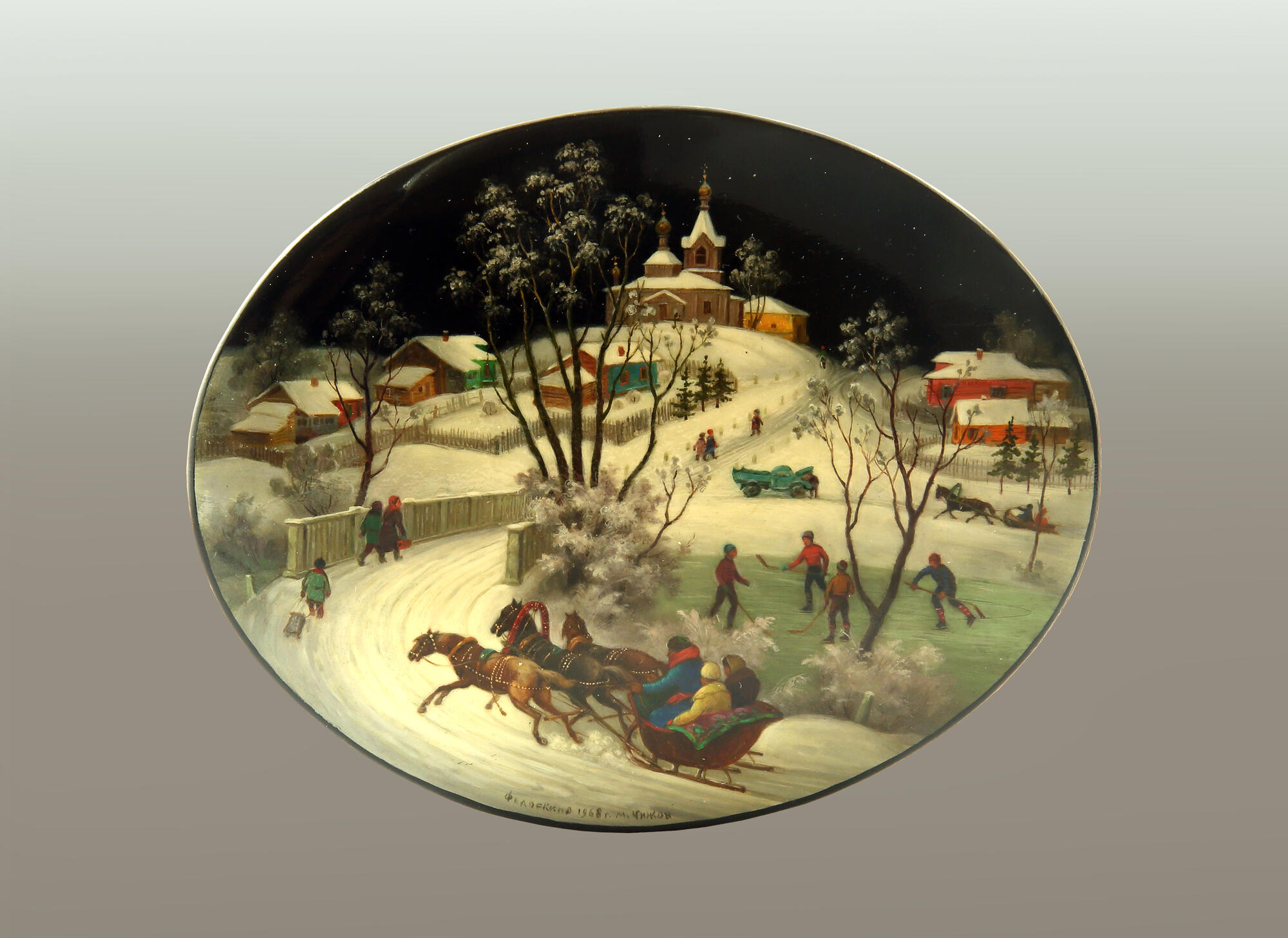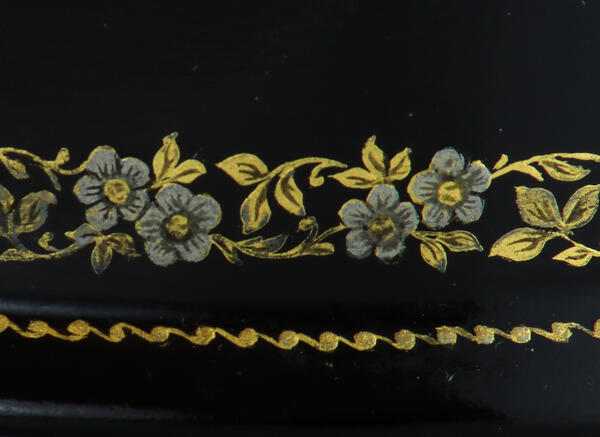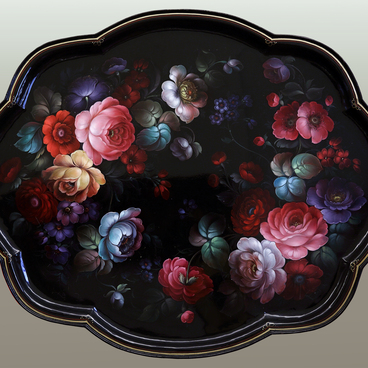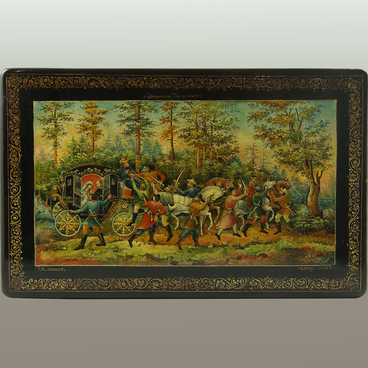Mikhail Stepanovich Chizhov, who painted this lacquer box, was an artist of the Fedoskino lacquer craft. The box is made of papier-mâché. The convex lid features a miniature — a winter landscape against a black evening sky. This is a real view of the village of Fedoskino in the 1960s. In a deep ravine is the frozen river Ucha, on the hill is the Church of St. Nicholas. Decorated sledges drawn by three horses drive onto the bridge. Young people play hockey on the river ice. With a touch of humor, Mikhail Chizhov depicted a truck that had broken down in the cold. Rural houses with vegetable gardens descend to the river. The landscape is well recognizable and one recalls the traditional miniatures with winter trips on hundred-year-old black-background lacquer boxes.
At the very end of the 18th century, the merchant Pyotr Korobov founded the production of “paper” snuff boxes (from papier-mâché) in this village on the banks of the Ucha. In the middle of the 19th century, the factory was owned by his son-in-law, the merchant Pyotr Lukutin. The factory was famous for a large assortment of products of various forms: tea and tobacco boxes, cigarette cases, snuff boxes, purses were decorated with miniature oil painting on black lacquer backgrounds, silver and gold foil, and mother-of-pearl plates.
Riding a troika of horses became the most popular plot. The small leather purse coated with papier-mâché plates is decorated with a trio of horses with peasants sitting on the cart.
When composing this drawing, a Lukutin artist based it on the famous engraving by Alexander Orlovsky “Royal Courier” and a drawing by the French artist P.-M. Roussel, who depicted peasant women on a cart with a dashing coachman in the genre of popular print.
By the 1870s, an art craft had developed in the villages surrounding Fedoskino: 460 people were engaged in the manufacture and pictorial design of papier-mâché and metal products. Peasant artists painted iron trays and even silver objects they brought from Moscow. The silver cigarette case is decorated with an image of a troika rushing along a snowy road. An artist of the Burbyshevs Workshop from the village of Zhostovo created his composition on the basis of the famous painting called “Maslenitsa” by the artist Pyotr Gruzinsky.
Mikhail Stepanovich Chizhov studied the history of Fedoskino miniature painting, recorded the stories of old artists, and restored the ancient secrets of decorating lacquer boxes.
At the very end of the 18th century, the merchant Pyotr Korobov founded the production of “paper” snuff boxes (from papier-mâché) in this village on the banks of the Ucha. In the middle of the 19th century, the factory was owned by his son-in-law, the merchant Pyotr Lukutin. The factory was famous for a large assortment of products of various forms: tea and tobacco boxes, cigarette cases, snuff boxes, purses were decorated with miniature oil painting on black lacquer backgrounds, silver and gold foil, and mother-of-pearl plates.
Riding a troika of horses became the most popular plot. The small leather purse coated with papier-mâché plates is decorated with a trio of horses with peasants sitting on the cart.
When composing this drawing, a Lukutin artist based it on the famous engraving by Alexander Orlovsky “Royal Courier” and a drawing by the French artist P.-M. Roussel, who depicted peasant women on a cart with a dashing coachman in the genre of popular print.
By the 1870s, an art craft had developed in the villages surrounding Fedoskino: 460 people were engaged in the manufacture and pictorial design of papier-mâché and metal products. Peasant artists painted iron trays and even silver objects they brought from Moscow. The silver cigarette case is decorated with an image of a troika rushing along a snowy road. An artist of the Burbyshevs Workshop from the village of Zhostovo created his composition on the basis of the famous painting called “Maslenitsa” by the artist Pyotr Gruzinsky.
Mikhail Stepanovich Chizhov studied the history of Fedoskino miniature painting, recorded the stories of old artists, and restored the ancient secrets of decorating lacquer boxes.





